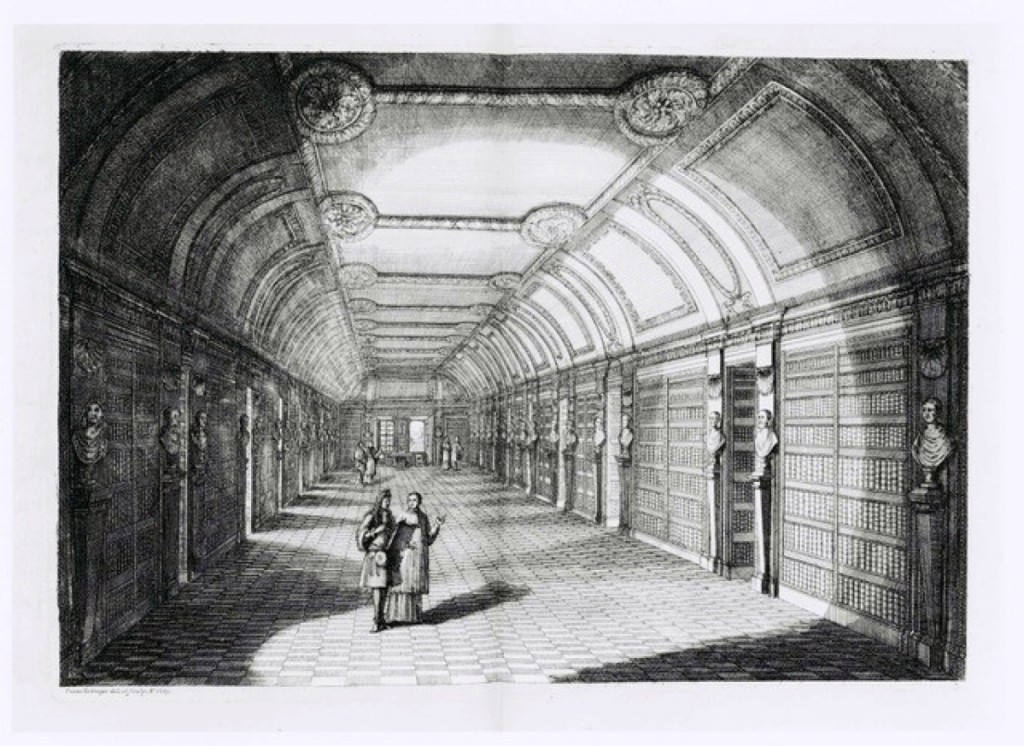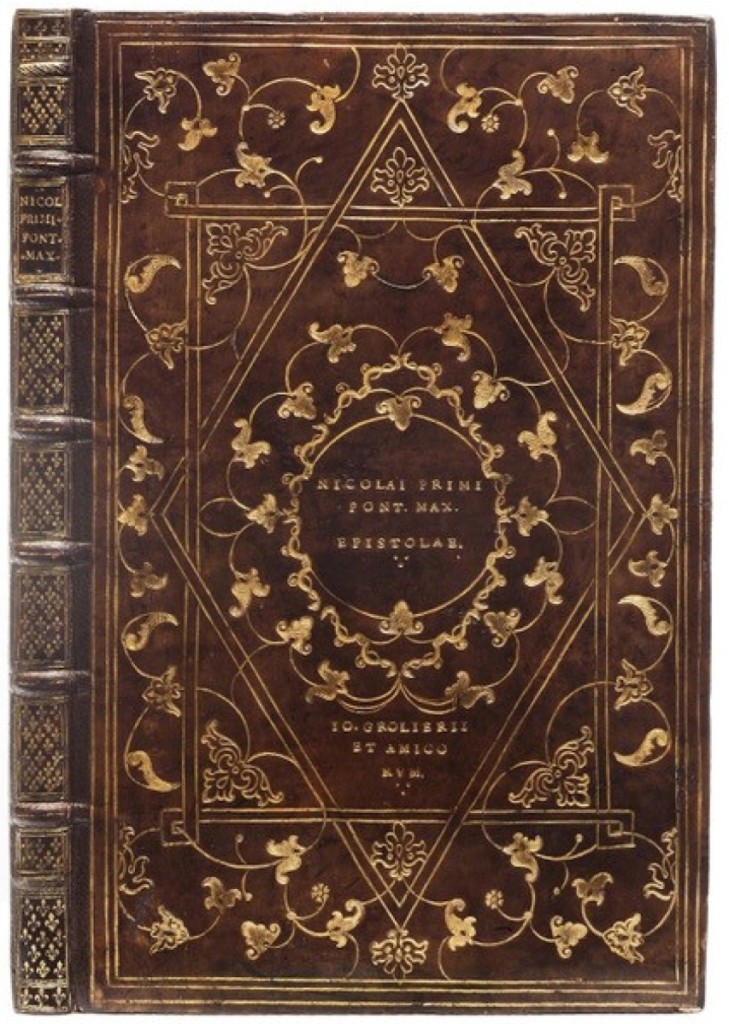
Claude Du Molinet, “Le Cabinet de la Bibliothèque de Sainte-Geneviève,” Paris: Antoine Dezallier, 1692.
NEW YORK CITY – On December 14, the Grolier Club unveiled its newly reconstructed state-of-the-art exhibition hall, capping a total renovation of the public spaces in the century-old building. To mark the occasion, the Grolier Club has mounted a celebratory exhibition “French Book Arts: Manuscripts, Books, Bindings, Prints and Documents, 12th-21st Century.” On view through February 2, the approximately 90 works are drawn entirely from the Grolier Club’s own rich and extensive collections.
This inaugural exhibition is a wide-ranging survey of the book arts of France, covering a thousand years of artistic achievements, from Medieval and Renaissance illuminated manuscripts to artists’ books and designer bookbindings of the current generation. Notwithstanding the many hundreds of public exhibitions that have been displayed at the Grolier Club in its 135 years, it has never before offered such a broad and deep survey of the artistic and typographic monuments of France.
The Grolier Club has maintained a strong Francophile tradition since its founding in 1884, beginning with its name. The Grolier Club was named for Jean Grolier, the Renaissance collector who was renowned for his patronage of scholars and printers, for the magnificent bindings he commissioned, and for a generous habit of sharing his library with friends.
The works on display are as diverse as one would expect from a millennium of French artistry: The authors range from the Middle Ages and the Renaissance to Voltaire, Anatole France, Jean-Paul Sartre and Jacques Brel. The artists, from anonymous scribes to the miniaturists Boyvin and the Master of the Claremont Hours; to Abraham Bosse, Felix Bracquemond and Henri Matisse. Bookbinders, from the late Middle Ages to the precocious Odette Lamiral, the dramatic Paul Bonet, the fabulous Santiago Brugalla and the imaginative Florent Rousseau. Bibliophiles, from the club’s patron saint, Jean Grolier, of course, to Jacques-Auguste de Thou, Jean-Baptiste Colbert, Count Hoym, Madame de Pompadour, Marie-Antoinette and latter-day French collectors and Americans inspired by France, include some of the Grolier Club’s own founders.
Among the highlights are manuscript and printed illuminated Books of Hours, including a sublime Mannerist work from the 1540s; early printed books by Robert Estienne and Aldus Manutius; extraordinary bindings from seven centuries; a letter from Thomas Jefferson to his Parisian bookseller; portrait prints of the great and the good; Matisse’s major livre d’artiste of the Occupation years, Pasiphaé; and commemorative medals and documents. Jean Grolier, the “Prince of Bibliophiles,” is honored with six of his books, four in their distinctive Grolier bindings, and three documents, including his royal appointment as Treasurer of France when he was 20 years of age.

Binding by the Cupid’s Bow Binder, on: (Pope Nicholas I, circa 800-867), Nicolae Primi Pont (ificis). Maximi Epistolae, Rome: Francesco Priscianese, 1542. The known provenance is Jean Grolier.
Many of the books have special provenances, but perhaps the strangest is an Eighteenth Century manuscript that has an unusual Twentieth Century provenance. The book contains an inventory of Madame de Pompadour’s library. It was liberated by the French Second Armored Division, and officially stamped by the Deuxième Division Blindée on May 4, 1945.
Found by French soldiers of the “Day-Day-Bay” in the Berghof, Adolf Hitler’s Berchtesgaden retreat, its presence is unaccounted for and was possibly given to Hitler by Göring.
Curated by H. George Fletcher – the exhibition and its accompanying book were organized and written by him – a long-serving member of the Grolier Club, he was elected to membership in 1973. Fletcher was the Astor curator of printed books and bindings at the Morgan Library & Museum and the inaugural Brooke Russell Astor director for special collections at The New York Public Library. He has been involved with scores of exhibitions in the United States and France, many of them on French bookish themes, and France honored him in 2013 as a Chevalier dans l’Ordre des Arts et des Lettres. This is his third exhibition at the Grolier in recent years. With French colleagues, he organized “Printing for Kingdom, Empire, and Republic: Treasures from the Archives of the Imprimerie Nationale,” 2011-12, and, with G. Scott Clemons, “Aldus Manutius: A Legend More Lasting than Bronze,” 2015.
The Grolier Club is at 47 East 60th Street. For further information, 212-838-6690 or www.grolierclub.org.
All photographs are from the collection of the Grolier Club













